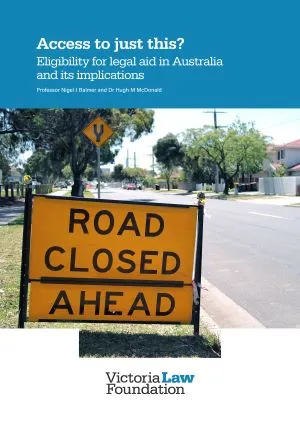Working in Community Legal Centres in Victoria: Workforce profile
The characteristics of the Victorian community legal centre workforce.

Capturing the work of community legal assistance
The Federation of Community Legal Centres Victoria Inc. engaged Victoria Law Foundation to conduct a survey of the community legal assistance sector workforce with the aim of capturing issues, experiences and views of their workforce across diverse roles, centres, and geography.
Workforce profile
The Workforce profile provides an overview of the characteristics of the Victorian community legal centre workforce. It reports on workforce demographics and diversity, legal practice and areas of law, work roles, hours worked, length of service, salaries, and working arrangements and benefits.
This report provides an overview of the workforce profile and is one of a series of reports from the Community Legal Centres Workforce Project
Download
The characteristics of the Victorian community legal centre workforce.

Key findings
Salary, working arrangements and benefits
The median income category of community legal centre employees was $65,000 to $77,999 per annum. More than half (59.5%) of the respondents believed their salary was somewhat or significantly less than others in a similar role outside the sector. Just over half (56.5%) of the community legal centre employees surveyed agreed or strongly agreed that their salary, working arrangements and benefits were fair.
Career pathways
Prior to working at their current legal centre, 16.6 per cent of respondents were working at private law firms, 15.7 per cent at a non-government organisation, 14.9 per cent at another community legal centre, and 12.1 per cent at a government organisation. On average, Workforce Survey respondents had been working at their current community legal centre for four years.
Legal practice and areas of law
A current legal practising certificate was held by 49 per cent of the workforce. The majority of people who held a legal practising certificate worked in civil and administrative law (67.2%). Further, 52.3 per cent reported that their main area of legal practice was family law (including family violence and child protection). Criminal law was the main area of practice for 29.2 per cent of respondents.
Workforce size
The workforce comprises of an estimated 4,036 employees and volunteers. This figure includes 1,274 employees, 2,115 volunteers, 315 students, and 332 board members.
Workforce demographics and diversity
The overwhelming majority of the community legal centre workforce were female (76.9%), 21.5 per cent were male and 1.6 per cent identified as non-binary, gender diverse. Nine per cent reported a disability. Nearly four per cent were Aboriginal and Torres Strait Islander people. Seventeen per cent of the workforce said they were LGBTIQ
Implications and insights
Frequently asked questions
Publication resources
Similar publications
You may be interested in these other research publications.




.webp)
